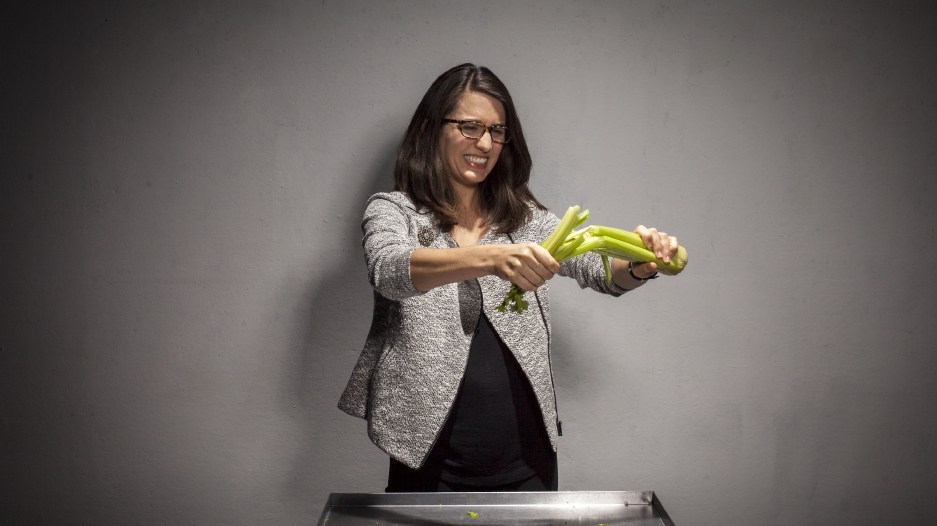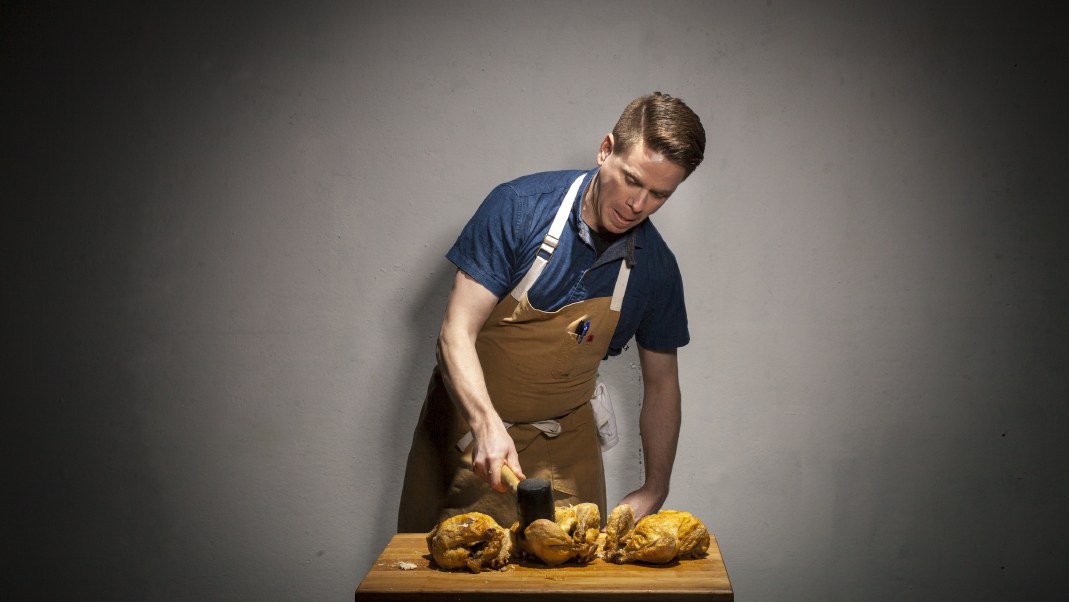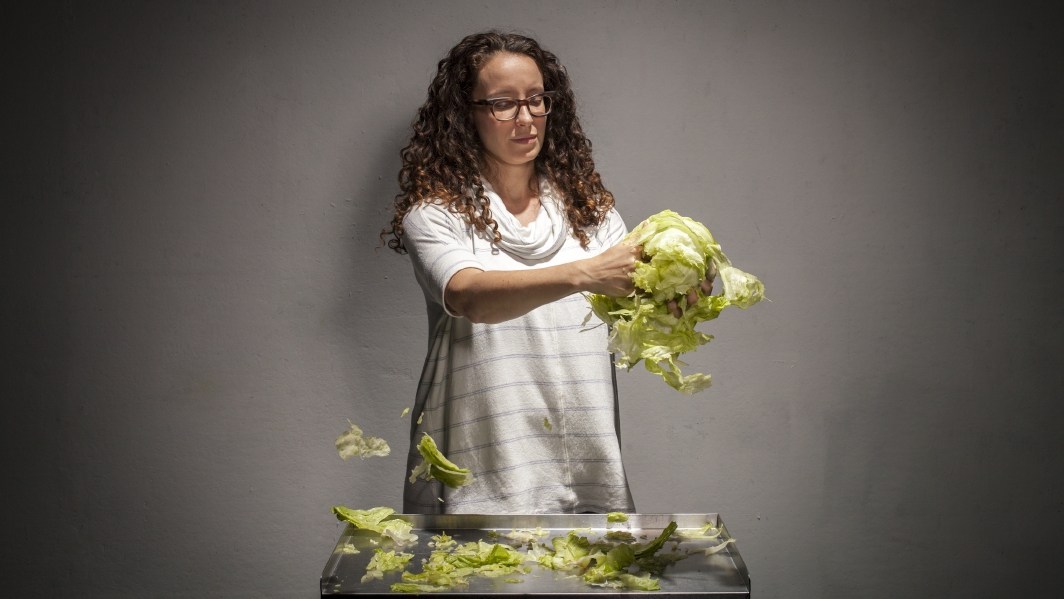Crack-k-squutch! A zombie’s head explodes in a loud, disgusting gush of decaying brain matter, and the audience gleefully recoils.
When it comes to Hollywood, in an era of digital special effects and computer-generated monsters, one of the last provinces of traditional analog elements is Foley art: the sounds that are added to movie scenes to give extra vividness to a head thwack, a creaking chair, or just the ever-present sounds of walking. These sounds are still created using physical props—and very often, those props come from the kitchen.
Jeremy Bloom is a New York sound designer who works in theater and radio as well as film. “Recording the actual sound of a thing,” he says, “is often not as effective as recording something else entirely.” So out comes the food. Coffee grounds on the floor can sound like dirt when recording footsteps. Footsteps crunching in snow might be created with a dry cornstarch mixture. And, he says, “for any violence, it’s all vegetables and fruits.”

Tim Prebble, a sound effects editor and designer from New Zealand, describes how he would artfully create the sound of a punch in the face. “The initial impact of the punch might be from slapping or punching a melon, combined with a tightly synced cabbage hit. If the punch landed near the mouth, we might then use some crushed shellfish combined with a pumpkin, melon, or seaweed break to emulate a jaw crack. Depending on how extreme the hit was, we might then transition into cartilage and gore sounds, as the jaw and head compressed, using egg and green pepper breaks. Once the main violence was over, add some more subtle orange squelches and shellfish moves.”
After using techniques like those in a few films, Prebble decided to record and make available a high-quality library of thousands of such sounds, titled Vegetable Violence. He unleashed an arsenal of machetes, hammers, saws, fists, and other weapons to wreak havoc on a hapless array of vegetables and fruits. The downloadable library includes almost 100 samples of pumpkins being stabbed; 52 cabbage heads beaten with bats; 110 “melon squelches”; and quite a bit more.

“A lot of time was spent on pumpkin cracks and gouges, and various melons. We also discovered by applying pressure to the inside ‘guts’ of a melon, we could create a vacuum, which created great sounds! Another discovery was if you crushed shellfish wrapped in a tea towel, it sounded like very nasty jaw and teeth movement.
“After each recording session, there was always a slight odor left, like a very strange salad.”

What’s in the Foley Artist’s Pantry?
CABBAGE AND LETTUCE
Hitting a head of lettuce or cabbage in close proximity to a microphone is “the most classic way” to emulate a punch sound, says Bloom.
CELERY
Perfect for cracking and crunching of bones. Wrap it in cloth first for a more muffled crack.
CHICKEN
To create the sounds of breaking bones, “I personally like putting things in (cooked) whole chickens and then beating the chicken with a sledgehammer or other bludgeoning device.” – Billiam Baker via http://www.epicsound.com/sfx/
COCONUT SHELLS
Can be clacked together for hoofbeats, as seen in Monty Python and the Holy Grail.
CANNED DOG FOOD
“The chunky stuff isn’t so good, but the tightly packed all-one-mass kind makes gushy sucking sounds when the air on the outside of the can is sucked into the can to replace the exiting glob of dog food. This sound can be used as an element in certain kinds of monster vocalizations, alien pod embryo expulsions, etc.” – Ashley Walker via http://www.epicsound.com/sfx/
MACARONI AND CHEESE
“Having just eaten a bowl of macaroni and cheese shells, I have to say it’s the most convincing tentacle sound I’ve ever heard. Use the rounded shells specifically as they have little pockets for air and extra squishy sounds. You get that suction cup action going, literally.” – Jay Semerad via http://www.epicsound.com/sfx/
SODA
“Pouring a fizzy drink onto tarmac or any floor is supposed to be very good for sea, or that’s what they used in Jaws anyway.” – Matt Sugden via http://www.epicsound.com/sfx/
VEGETABLES
“For the sound of growing plant tentacles or roots crawling up walls and grasping objects, try squeezing some raw vegetables—like iceberg [lettuce], green peppers, or asparagus. Also perhaps stirring in some pasta sauce and add some whooshes if they grow fast.” – David Filskov via http://www.epicsound.com/sfx/
WATERMELON
“Any stab you hear, that’s usually a watermelon,” says Bloom.
Photography by Kevin White.

